Astronomers discover a new type of nebula!
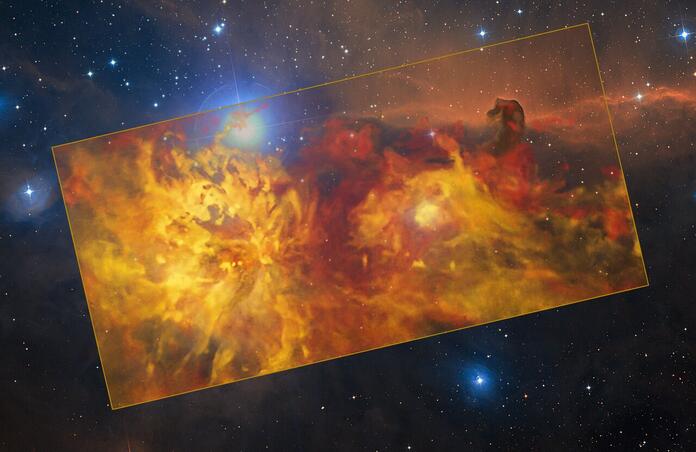
Nebulae never cease to amaze us!
Many astrophotographers’ favourite type of targets are nebulae – whether they’re emission, dark, or even planetary, these clouds of dust and their eerie silhouettes just cause us to wonder – especially considering their role in the lifecycle of stars, as they are both nurseries and remnants. On top of the three types I’ve just mentioned, astronomers have now discovered “galactic emission nebulae”, a form of nebula that evolves around a binary system.
The study looked at binary star YY Hya, composed of a star just slightly cooler than the Sun (4400°C, while the Sun is about 5800°C) and a white dwarf; they orbit each other at a distance of just 2.2 solar radii! Some 500 000 years ago, the white dwarf was in its red giant phase, where it shed off its outer layers, thus forming a shared envelope around the system. Inside that shell though, the stars continue their life undisturbedly. At an astonishing temperature of 66 000°C, the white dwarf continuously heats up its companion’s face, causing variations in its luminosity as well as effects in its spectrum.
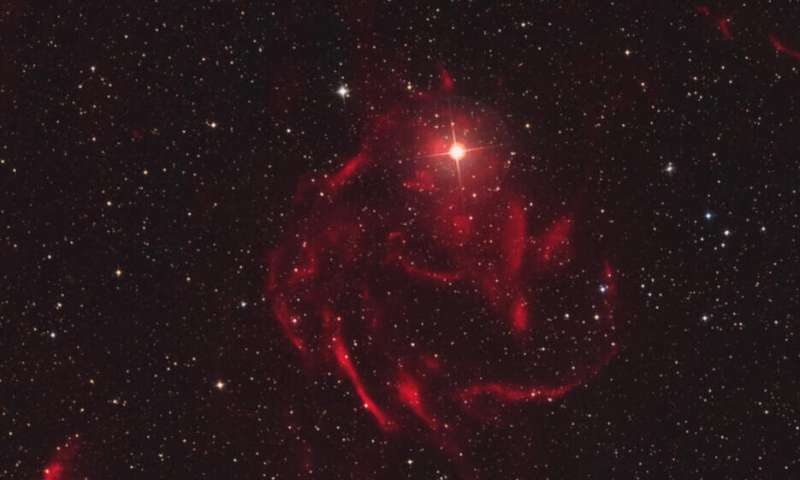
Usually, these envelopes are hard to image because of their incredible sizes – this one is 15 light-years across on average, which is just under 4 times the distance between the Sun and the closest star Proxima Centauri, but fragments have been found as far out as 39 light-years. This also implies that typically, such an extended object gets disrupted by other celestial objects in the vicinity, but since YY Hya orbits our galaxy from slightly above the galactic disk, we can now witness a complete galactic emission nebula. It’s actually while examining digitized historical astronomical images from the 80s that a group of amateur astronomers saw a fragment of YY Hya. This was brought to the attention of researchers at the University of Innsbruck, who after comparing this with other sources (notably images by the Spitzer Space Telescope) concluded that it is not a planetary nebula.
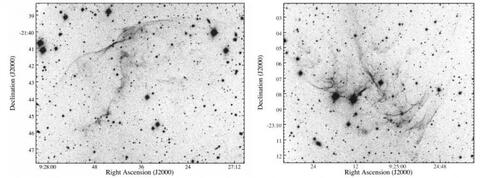
H-alpha images of the extended galactic nebula around YY Hya 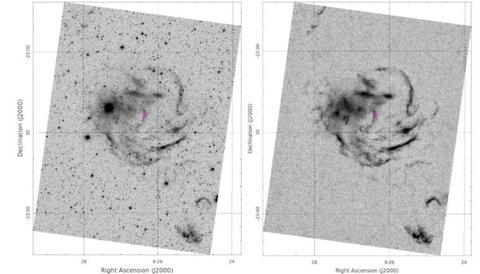
H-alpha images of the central portion of the nebula (YY Hya dotted pink in the center)
Further investigations conducted notably with the help of CHILESCOPE, as well as with GALEX, Catalina Real-time Transient Survey and TESS data, ended up clarifying the nature of YY Hya. The astronomers conclude their study by speculating that YY Hya may well be the 1065 BP “guest-star” mentioned in ancient Chinese records.
Pre-eruption: The star emits bursts of heat and radiation (that's when the astronomers detected the active star).
Violent flash: The collapse of the star itself (at 11 seconds in the video). This is the supernova.
Aftermath: The exploded star and resulting cloud of dust, gas, and elements expand into space
Another star that invites itself into this article is 2020tlf. To be accurate, this is the name of the supernova that terminated the progenitor’s life as a red supergiant. The reason why this is a newsworthy one is that for the first time, astronomers have actually captured the process that led up to the supernova and, uniquely, the violent explosion itself, using the W.M. Keck Observatory’s Low Resolution Imaging Spectrometer on Mauna Kea, Hawai’i. In summer 2002, they detected an unusually active star in the galaxy NGC 5731, which they monitored for 130 days before witnessing the dazzling flash of the explosion. This teaches a lot about how red supergiants behave in their final stages: it was previously thought that they were pretty quiet before the dramatic collapse, yet 2020tlf tells us otherwise.
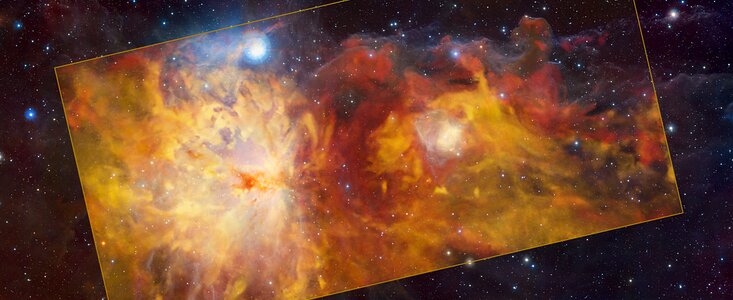
(Cover Image shows a APEX-DSS2 composite)
Just for the pleasure of indulging in more nice pictures of nebulae, above you can see the European Southern Observatory’s latest image of the Flame Nebula, which is part of the larger Orion Molecular Cloud (which contains other famous nebulae, like the Horsehead). Taken with the Atacama Pathfinder Experiment (APEX) for the Large CO Heterodyne Orion Legacy Survey (ALCOHOLS), this stellar nursery was mainly observed to test APEX’s SuperCam instrument. Interestingly, by mapping the distribution of carbon monoxide molecules during ALCOHOLS, a nearly perfectly circular nebula was discovered and was baptised the Cow Nebula.
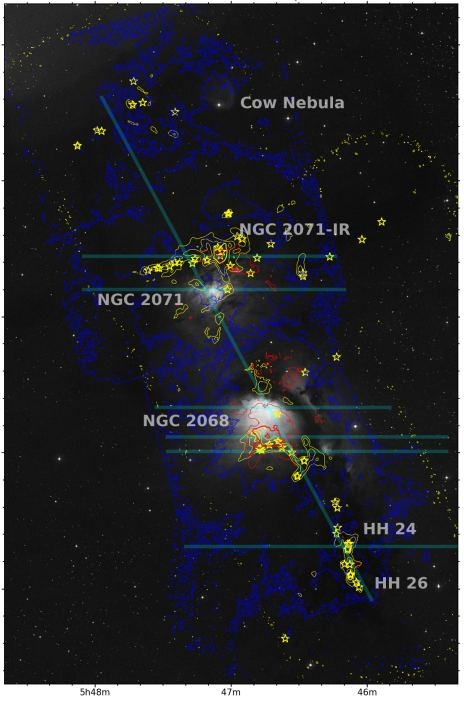
Nebulae of the Orion Molecular Cloud, notably showing the location of the Cow Nebula Globule 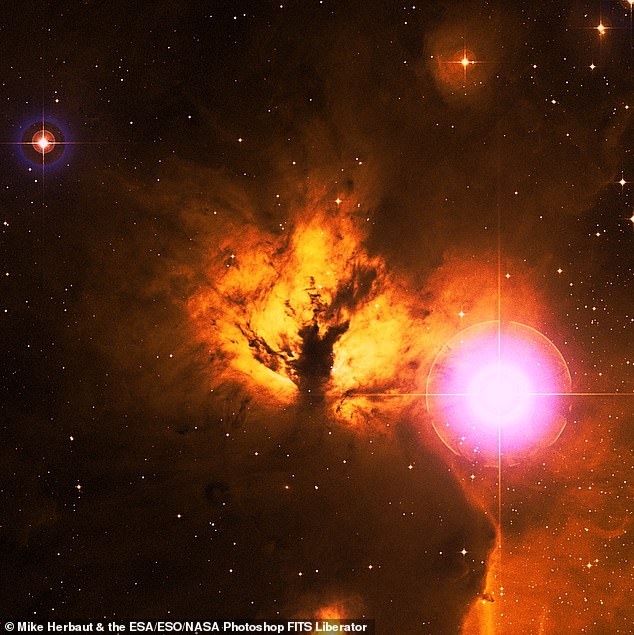
HST view of the Flame Nebula 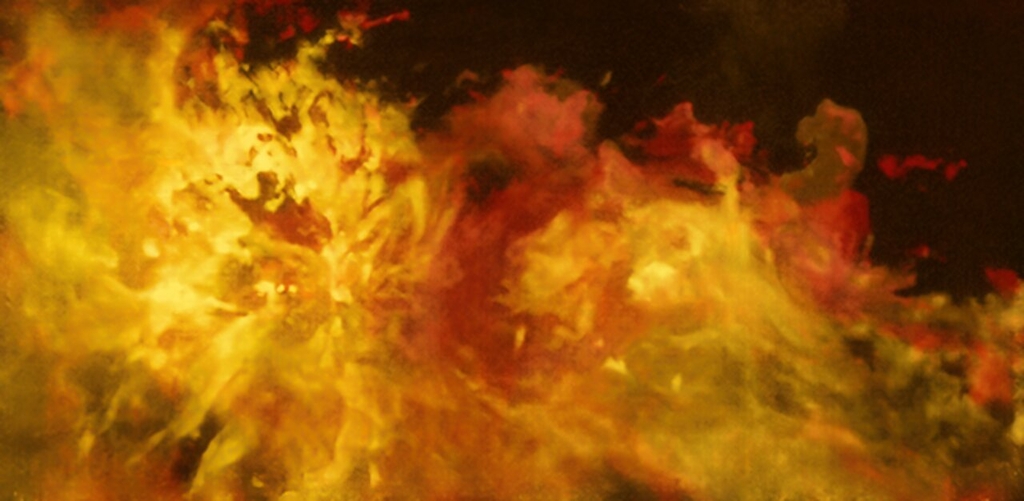
The original APEX image: Flame Nebula and its surroundings captured in radio waves
Gemini, with is Gemini Multi-Object Spectrographs (GMOS), has also been busy being pointed at nebulae. Below is its view of one of the closest star-forming nebulae to us, the Chamaeleon I dark cloud, which with its neighbours the Chamaeleon II and Chamaeleon III dark clouds comprise the Chamaeleon Complex. Specifically, the “one-winged butterfly” is a substructure called the Chamaeleon Infrared Nebula. Another striking feature is the bright red object to the right of the image centre, which is known as a Herbig-Haro (HH) object, this one being HH 909A. HH objects form when a jet of gas collides with nearby clouds of gas and dust, and hence are often found in star-forming regions like the Chamaeleon Complex.
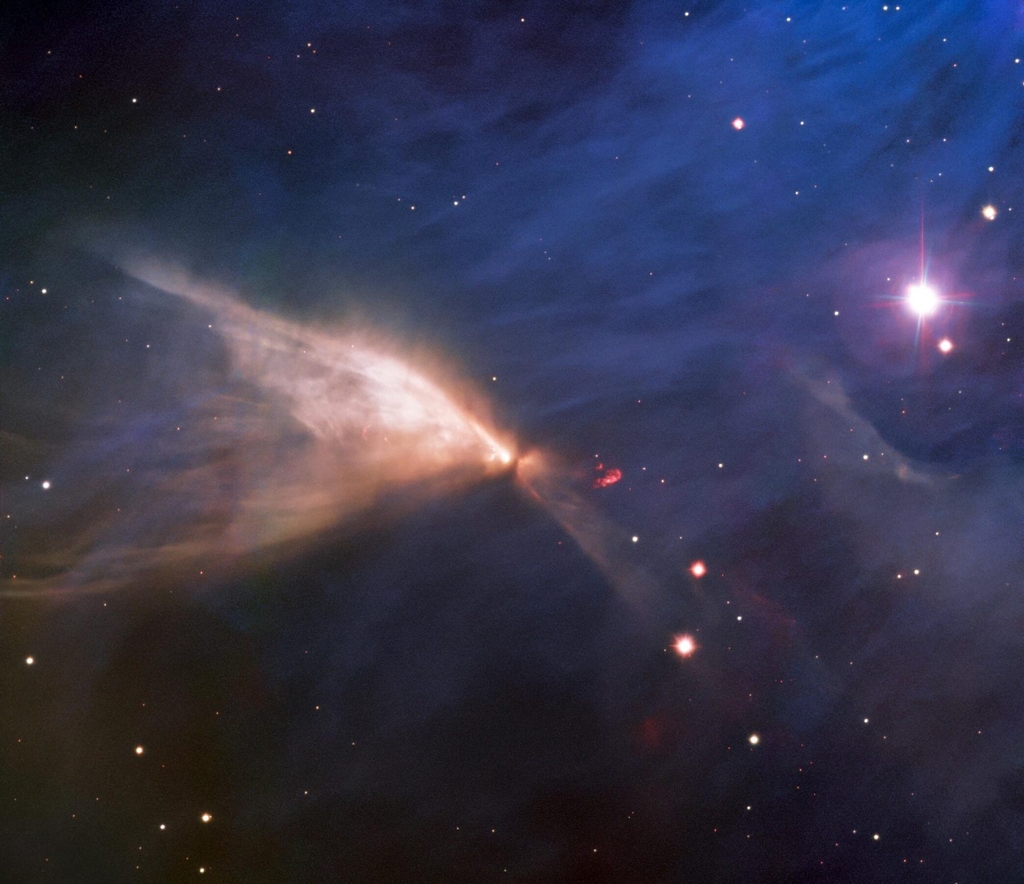
A new category of nebulae and newly discovered nebulae, supernovae and star-forming regions: decidedly, nebulae are fascinating targets.
Cover Image: Flame Nebula APEX-DSS2, ESO/Th. Stanke & ESO/Digitized Sky Survey 2. Acknowledgement: D. De Martin
Image Credits:
1 - The new nebula, M. Germiniani
2 & 3 - YY Hya nebula, Kimeswenger et al., A&A 2021
4 - Artist’s rendition of 2020tlf, W. M. Keck Observatory/A. Makarenko
5 - Flame Nebula APEX-VISTA, ESO/Th. Stanke & ESO/J. Emerson/VISTA. Acknowledgment: Cambridge Astronomical Survey Unit
6 - Orion Molecular Cloud, Stanke et al 2021
7 - Flame Nebula viewed by the HST, processed by M. Herbaut & the ESA/ESO/NASA Fits Liberator
8 - Flame Nebula, ESO/Th. Stanke
9 - Chamaeleon Infrared Nebula, International Gemini Observatory/NOIRLab/NSF/AURA, Acknowledgments: Image processing: T.A. Rector (University of Alaska Anchorage/NSF’s NOIRLab), J. Miller (Gemini Observatory/NSF’s NOIRLab), M. Zamani (NSF’s NOIRLab) & D. de Martin (NSF’s NOIRLab)
